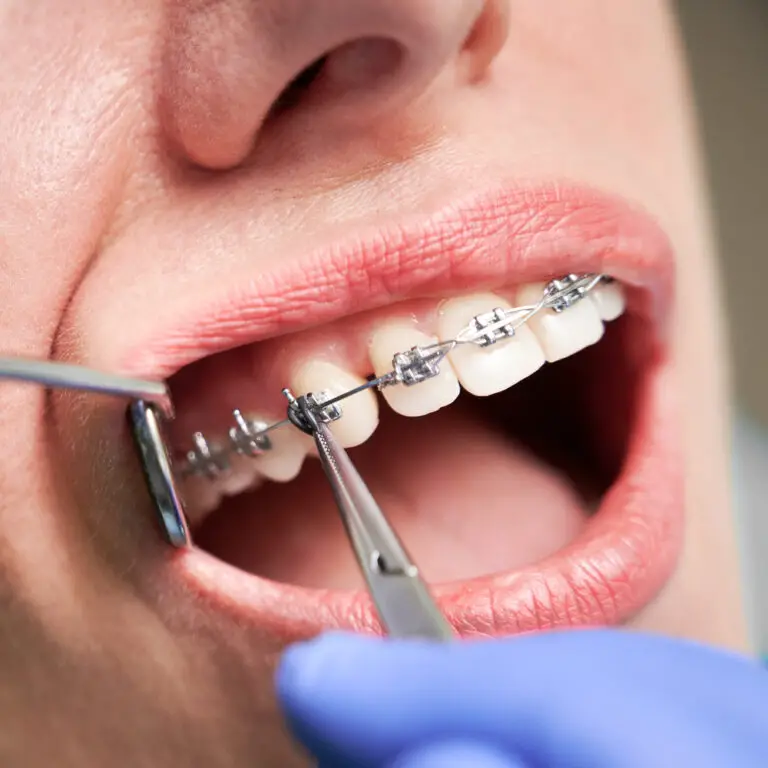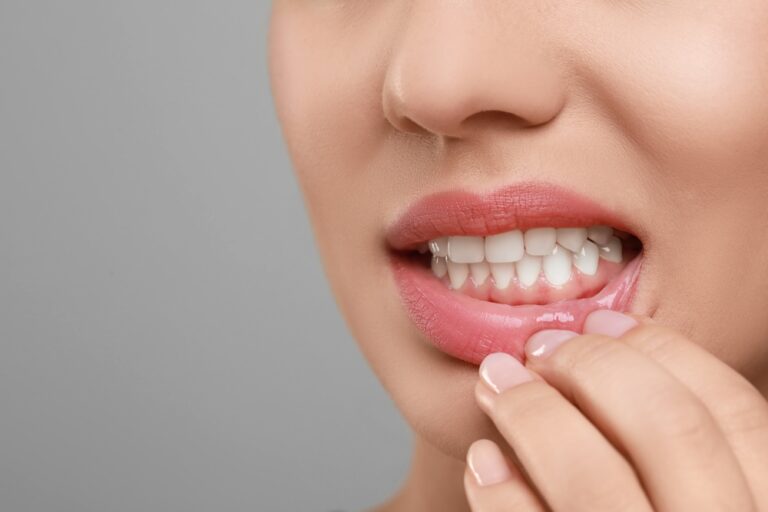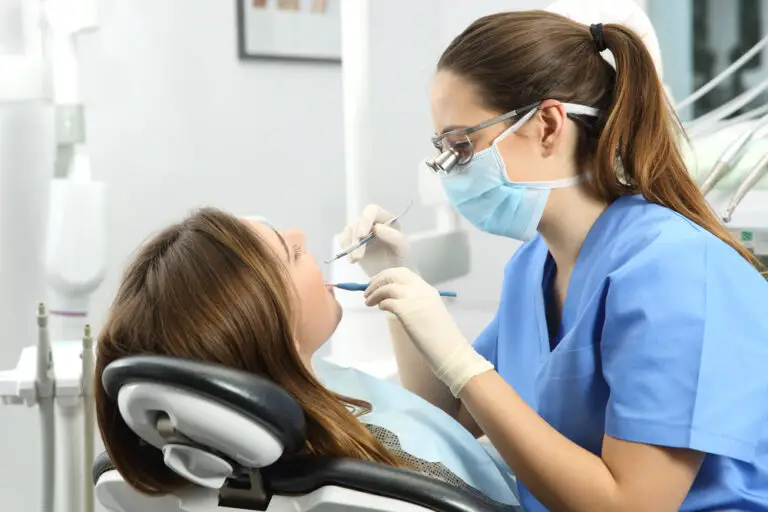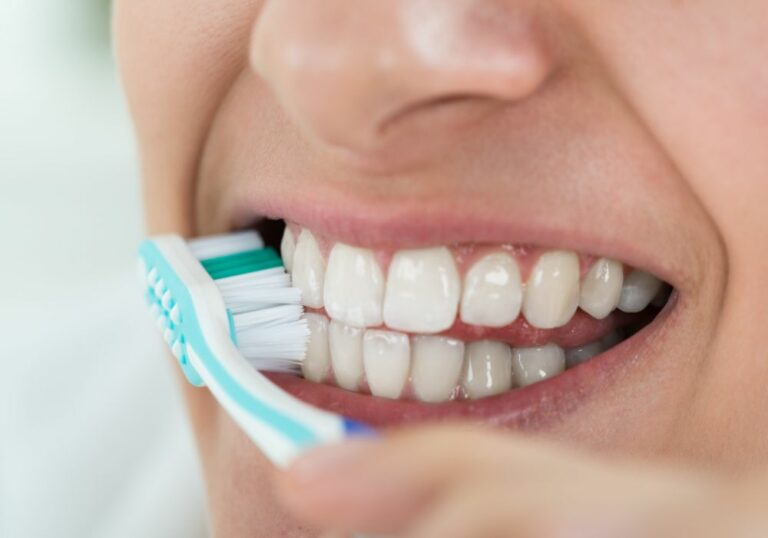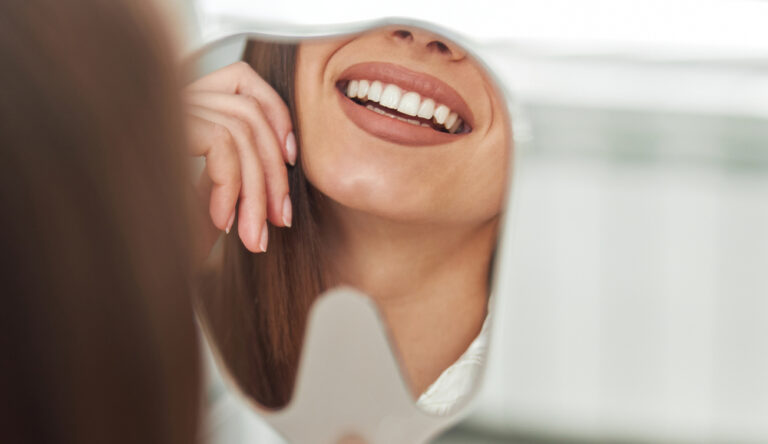Dental cleaning is an essential part of our dental health routine, but unfortunately, it’s something that many people put off because of the pain they associate with this sometimes uncomfortable procedure.
However, it doesn’t need to be like this, and in this post, we explain the reasons as we answer the question, why does dental cleaning hurt so much?
If you want a preview of some of the things we’re going to be talking about, you can also check out this video first before you read on.
What happens during dental cleaning?
Before we think about why dental cleaning hurts, let’s start by talking about what happens during dental cleaning.
We can break it down into three main steps:
Examination
The first part of dental cleaning involves a mouth examination, usually carried out by the hygienist.
During this examination, the hygienist checks your teeth and gums to see what kind of work needs to be carried out on plaque and tartar build-ups and stains on your teeth.
They will also look for other potential problems such as inflamed or swollen gums, gum disease or any other problems that need to be communicated to the dentist for further attention.
Scaling
Next comes the main cleaning part, the scaling.
During this phase, the main job of the hygienist is to remove plaque and tartar build-ups, either through scraping with a manual hook-shaped tool or by using an ultrasonic tool that removes tartar through vibrations.
This is the part that can often cause the most pain, but we’ll come to that in just a moment.
Polishing
Finally, the hygienist will polish your teeth using a special powered polishing tool and some abrasive paste.
This step removes any last remnants of plaque or tartar that haven’t been removed during the scaling part, and it also removes any stains from your teeth, returning them to a healthier, more attractive color.
This part shouldn’t usually hurt, but it’s possible to feel some discomfort during polishing if you have sensitive teeth, especially after a vigorous scaling session.
After polishing, hygienists will also sometimes apply a fluoride treatment, which is painless, and after that, you will rinse your mouth and the cleaning is finished.
Why Does Dental Cleaning Hurt So Much?
So why does dental cleaning hurt?
Well, in fact, dental cleaning shouldn’t hurt. If your teeth are already clean and in good health, dental cleaning should be painless and only mildly uncomfortable at worst.
However, if your teeth are not in great shape, or if you haven’t had a dental cleaning for a long time, that’s when the problems – and the pain – can start.
If you have poor dental health and rarely see your hygienist, there are several reasons why dental cleaning can be an uncomfortable experience – and in the worst cases, quite a painful one. Here are the main causes:
1. Gingivitis
“Gingiva” is the medical word for gums, and gingivitis is a mild form of gum disease that can be caused by poor dental hygiene and infrequent check-ups and dental cleanings.
In the early stages of gum disease, the gums become swollen and tender, and as the hygienist cleans your teeth and scrapes away the tartar, you may feel pain in your gums – and sometimes, blood vessels in your gums may rupture, causing your gums to bleed.
If there is a significant build-up of plaque and tartar in your mouth, your hygienist will have to work harder and spend more time cleaning your teeth – including along the gum line – which will only make the pain worse.
2. Periodontal disease
If gingivitis is not caught early, it can develop into periodontal disease – the technical term for full-blown gum disease.
This is a more serious condition that affects the gums, the roots of your teeth and even the underlying bone structure.
If you have periodontal disease, symptoms can include swollen or bleeding gums, gum sensitivity or pain, sensitive teeth, bad breath and heavy tartar build-up above and below the gum line. If this condition is left untreated, it can even lead to tooth loss.
If you have periodontal disease when you go for your dental cleaning, there’s a good chance you’re in for an uncomfortable time, but it’s important for your hygienist to complete the cleaning because it will halt the damage and help start the healing process.
3. Sensitive teeth
Another potential source of pain during a dental cleaning is sensitive teeth, and this can also be related to gum disease.
If your gums are not healthy, they can pull away from the teeth, leaving the part below the gumline – including the root – exposed when it should be protected.
This will result in your teeth becoming sensitive to being touched, but unfortunately, the hygienist will need to clean these sensitive areas to allow them to heal, often with vigorous scraping – which, again, is not likely to be something you enjoy.
4. Tooth decay
Tooth decay is another condition caused by poor dental health and infrequent visits to your dentist and hygienist – and it’s also a condition that can cause your teeth to become more sensitive, leading to a more painful experience during dental cleaning.
How can we make dental cleaning hurt less?
What should be obvious by now is that poor dental hygiene and infrequent dental cleanings are the main causes of pain during cleaning.
This is partly because the hygienist has to work harder and clean more vigorously to return your teeth to a healthy state, but also because you are likely to be suffering from one or more dental health issues that also increase the pain.
However, the opposite is true – if you look after your teeth and go for regular check-ups and cleanings, it will result in shorter, less painful cleaning sessions each time.
Specifically, here are some of the things you can do to ensure your dental cleaning is pain-free:
1. Follow dental hygiene best practices
The first and easiest thing you can do to ensure your dental cleanings are as painless as possible is to always follow oral hygiene best practices.
This means brushing your teeth at least twice a day and flossing at least once a day. The use of antibacterial mouthwash is also recommended.
Following this simple advice will help ensure your teeth and gums are in optimal condition and that plaque and tartar build-ups are minimal – which will result in much less painful dental cleanings each time.
2. Go for regular check-ups and dental cleanings
As well as looking after your teeth properly by brushing and flossing, you should also make sure you have a dental cleaning twice a year.
This way, the work your hygienist has to do each time will be far more minor and less intrusive, so it will hurt a lot less.
Having regular dental cleanings will also help prevent you from developing conditions like gingivitis, periodontal disease or tooth decay, and this will also contribute to a far more comfortable experience every time you have your teeth cleaned.
This should also be coupled with regular check-ups with your dentist, which will allow your dentist to catch any potential problems early and take the necessary action before things get any worse.
3. Ask for anesthetic
If you go for a dental cleaning and you are suffering, you don’t need to just tough it out.
If you’re in a lot of pain from what your hygienist is doing, you can ask them to stop and give you some local anesthetic to numb the pain.
If you haven’t been for a cleaning for a while, this can be a good option for the first few times back because it will help you get through the most painful visits.
However, if you resolve to stick to a regular dental cleaning routine thereafter, as your teeth and gums return to a healthier state, you will eventually find you no longer need the anesthetic.
FAQs
What are plaque and tartar?
Plaque is a film of saliva, tiny food particles and bacteria that cover your teeth and that can be removed through brushing and flossing.
However, if plaque is left to accumulate for only 24 to 72 hours, it combines with minerals that are also present in your saliva and solidifies into tartar.
Tartar is the cause of a range of conditions such as gum disease. You can’t remove it by yourself, so if it starts building up in your mouth, a dental hygienist will need to remove it for you.
Why do we need dental cleaning?
We need to have dental cleaning done to remove plaque and tartar build-ups, to clean and polish our teeth and to help ensure our teeth and gums remain in optimal health.
How often should we have dental cleaning done?
It is recommended to go for dental cleaning twice a year.
It doesn’t need to hurt!
So as we’ve seen, although many people consider dental cleaning an uncomfortable and even painful experience, it doesn’t need to hurt at all!
As long as you follow good dental care practices by brushing and flossing regularly – and going for dental cleaning twice a year – you’ll find that dental cleaning is a quick and painless experience that you might even come to enjoy.

